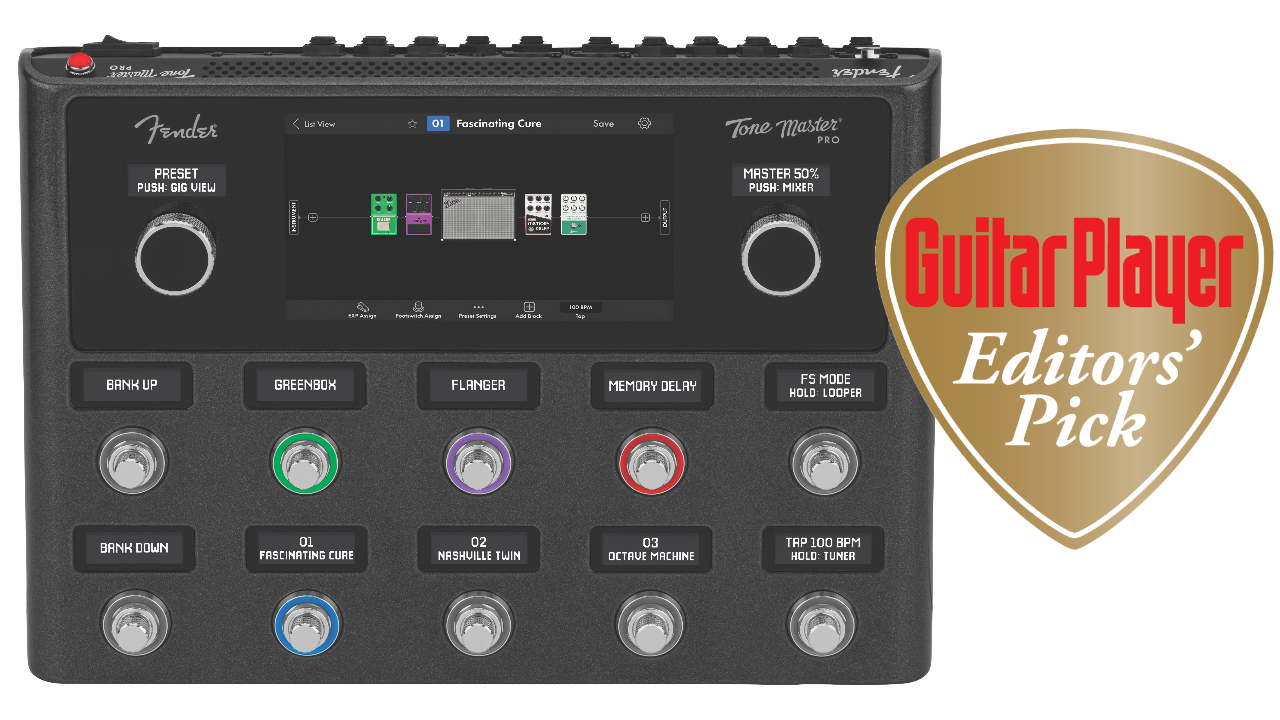GuitarPlayer Verdict
The Tone Master Pro offers an impressive amount of versatility — in sounds, functionality and connectivity — all at a level of quality that suits the professional stage as well as the rehearsal room and is a worthy winner of a Editors' Pick award
Pros
- +
A well-designed and ruggedly constructed modeler with professional caliber sound quality and impressive versatility on all fronts
Cons
- -
The non-Fender amp models initially available might seem limited for some tastes
You can trust Guitar Player.
With arguably the richest history and deepest track record for groundbreaking tube-amp design and manufacture in the industry, Fender was bound to make big news when it joined the digital competition with a modeling rig. Indeed, the introduction of the Tone Master Pro late in 2023 sparked some of the most frenzied gear buzz of the year, and immediately changed the calculus for every old-school holdout who might consider a future move to modeling.
The modeling format in general is familiar to most guitarists by now, whether or not they have ever played one, and the Tone Master Pro presents no obvious surprises.
It’s a foot-switchable, floor-based unit that includes digital processing for more than 100 amp and effects models, 6,000 Fender-captured impulse responses (IRs) of speaker cabs and mics (plus support for third-party IRs), a 60-second stereo looper, onboard space for more than 500 user presets and thousands more from the cloud using the remote Tone Master Pro Control app, with USB and Bluetooth connection to auxiliary functions, stand-alone digital audio interface capabilities and much more.
The Tone Master Pro’s dark-gray metal enclosure and general layout put it in line with the serious competitors looks and layout-wise. At 14.6 by 10.3 by 3.8 inches, and a weight of just under nine pounds, it’s about 30 percent smaller than the Line 6 Helix Floor, 20 percent smaller than the Fractal FM9 and some 40 percent larger than the Neural DSP Quad Cortex, all of which are also currently identically priced.
Like the Quad Cortex, its 10 foot switches double as rotary knobs to dial in myriad amp and effect parameters, but these are bigger and designed like mini knurled Telecaster knobs, a nice touch that also aids grip.
Other nifty features include the built-in power supply, requiring no external units to misplace, just a standard three-prong cable with IEC connector. Switch on the Tone Master Pro and a miniature red amp-style jewel light comes to life to indicate the early stages of powering up. It’s a nice, familiar touch.
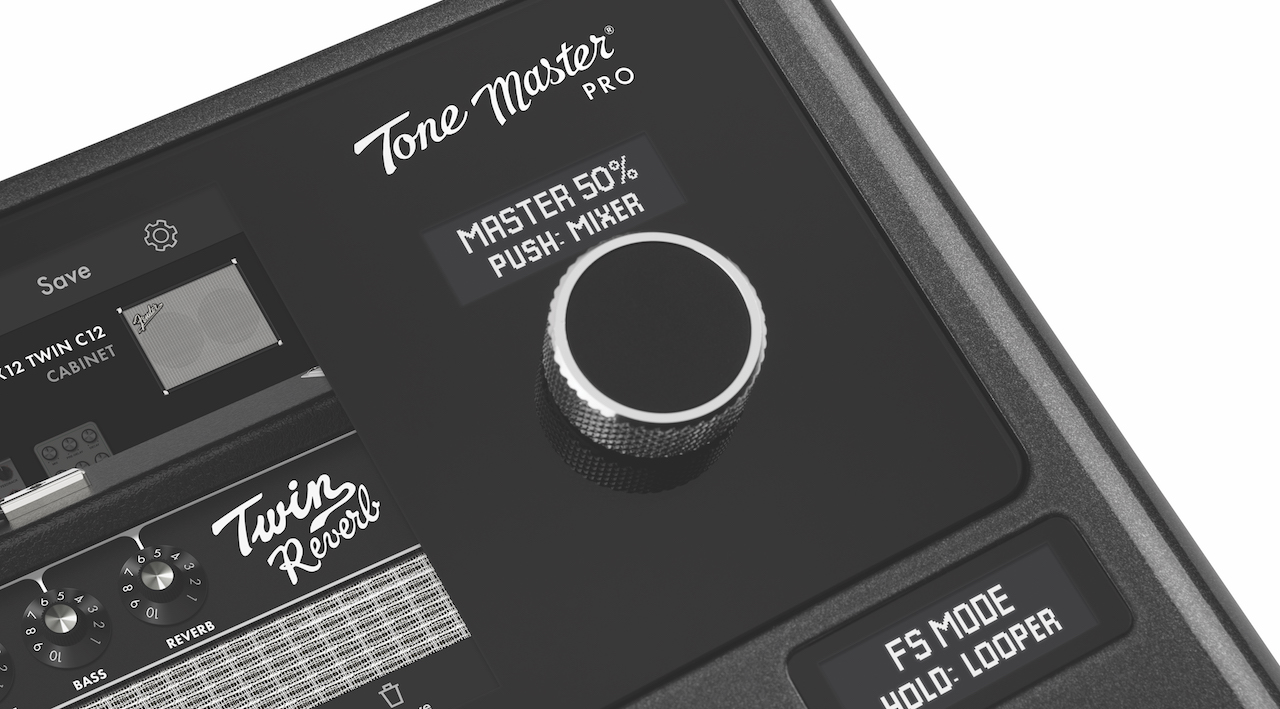
The control face also includes two large knobs, one either side of the seven-inch color touch screen, for rotary preset selection (push to toggle rig view) and master volume (push to access internal mixer). Each foot switch also includes an LCD “scribble strip” that elucidates its current function, which changes according to mode (from preset selection, control parameter, amp/effect on/ off and more).
At most, this allows for eight instant tone selections from any rig while in FS (foot switch) mode, but foot switches can be programmed to perform multiple functions (e.g. overdrive and delay on and tremolo off with the press of just one button), and external expression and switch pedals can further expand the range.
The two foot switches at the right end of each row remain dedicated to, in the top row, FS mode (or hold for looper) and, in the bottom row, tap tempo (or hold for tuner).
All the above adds up to a lot of easy and intuitive user access to programming and functionality. But perhaps the biggest boon in this package is the seven-inch color touchscreen.
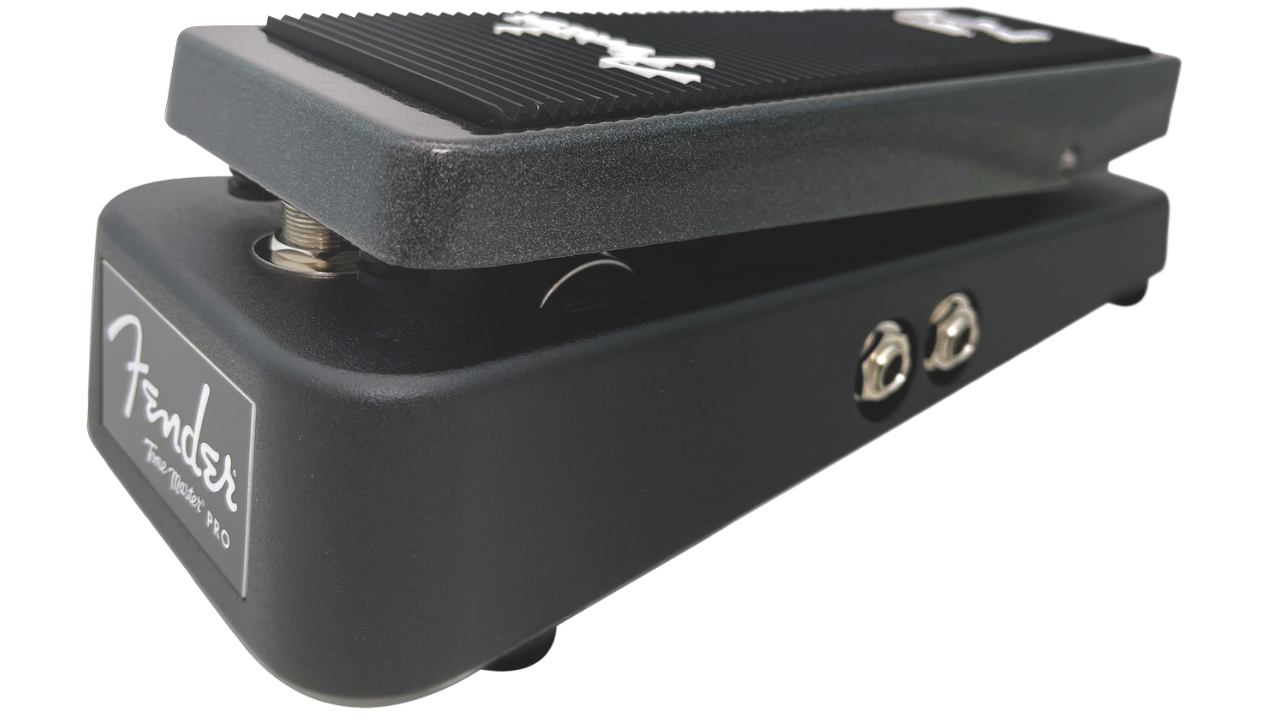
Unlike the generic symbols offered on those of most of its rivals, the Tone Master Pro’s screen presents realistic-looking graphic representations of the effects, amps and cabs available in the selected rig, along with very clear designations for further functions.
Tap an amp or a pedal to reveal a larger rendition and full access to its controls via eight rotary foot-switch/encoders. Suffice it to say these adjustments and the saving of edited presets are about as easy as one could hope for and mostly self-explanatory, even without the comprehensive literature included. (It’s worth noting that editing doesn’t offer deep-dive tweaks of tube bias and other techy parameters, the way that Helix and Quad Cortex do.)
Connectivity is extremely comprehensive. In addition to the single ¼-inch instrument input and Amphenol combined ¼-inch/XLR mic/line input, there are sends and returns for a full four FX loops (with three and four combinable in stereo); left and right ¼-inch and XLR outs with ground-lift switch for output 1; left and right ¼-inch outs for output 2; a ¼-inch stereo headphone out; and an eighth-inch aux in (external sources can also play through the unit via Bluetooth).
There are also connections for Exp 1 and 2; a toe switch (an extra latching or non-latching foot switch); Amp Ctrl (for switching of up to two functions on an external amplifier); MIDI In and Out/Thru; and a USB-C connection.
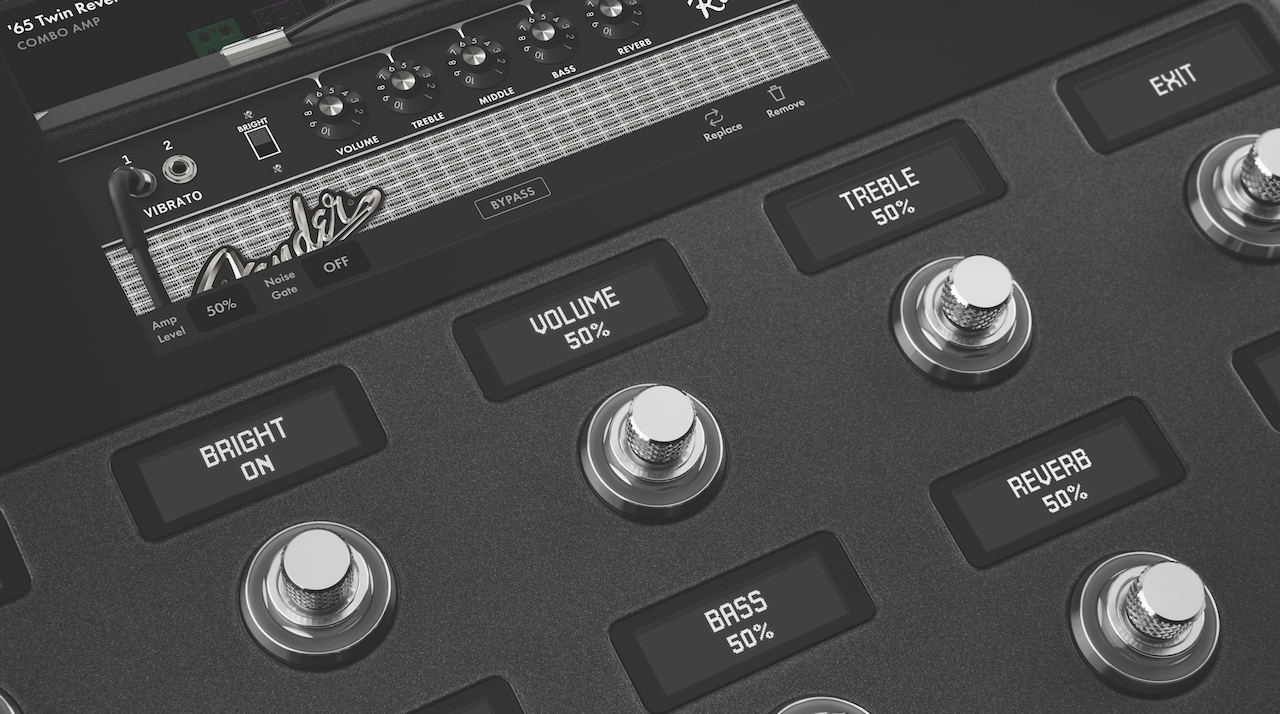
There’s also a Micro SD card slot to expand storage capabilities. And while the Tone Master Pro has no expression pedal built into the unit, Fender has partnered with Mission Engineering to offer the SP1-TMP ($175, sold separately), a rugged co-branded foot pedal specifically designed to access a range of Tone Master Pro functions (more on this to come).
The Tone Master Pro’s selection of 30 amp models represents respectable versatility (most are doubly available as either combo/half-stack or head to match with alternative speaker cabs), but is perhaps not overabundant in its variety. Fender offerings, unsurprisingly, make up nearly half the content, with the 14 models including the expected classics plus emulations of the Bassbreaker and Blues Jr, yet no tweed Champ, Deluxe or Super, rather puzzlingly.
Otherwise, there are thinly disguised renditions (as per most amp modelers) of several Marshalls (but no JTM45), a Vox AC30, a Roland JC120, a couple of Mesa/Boogies, a Friedman BE-100 and Bogner Uberschall, and the first ever authorized models of the EVH 5150 IIIS 6L6 Stealth. No Hiwatt or Orange; no Dumble, Trainwreck, Matchless or the like, and no bass amps, but Fender has commented that there are many more to come.
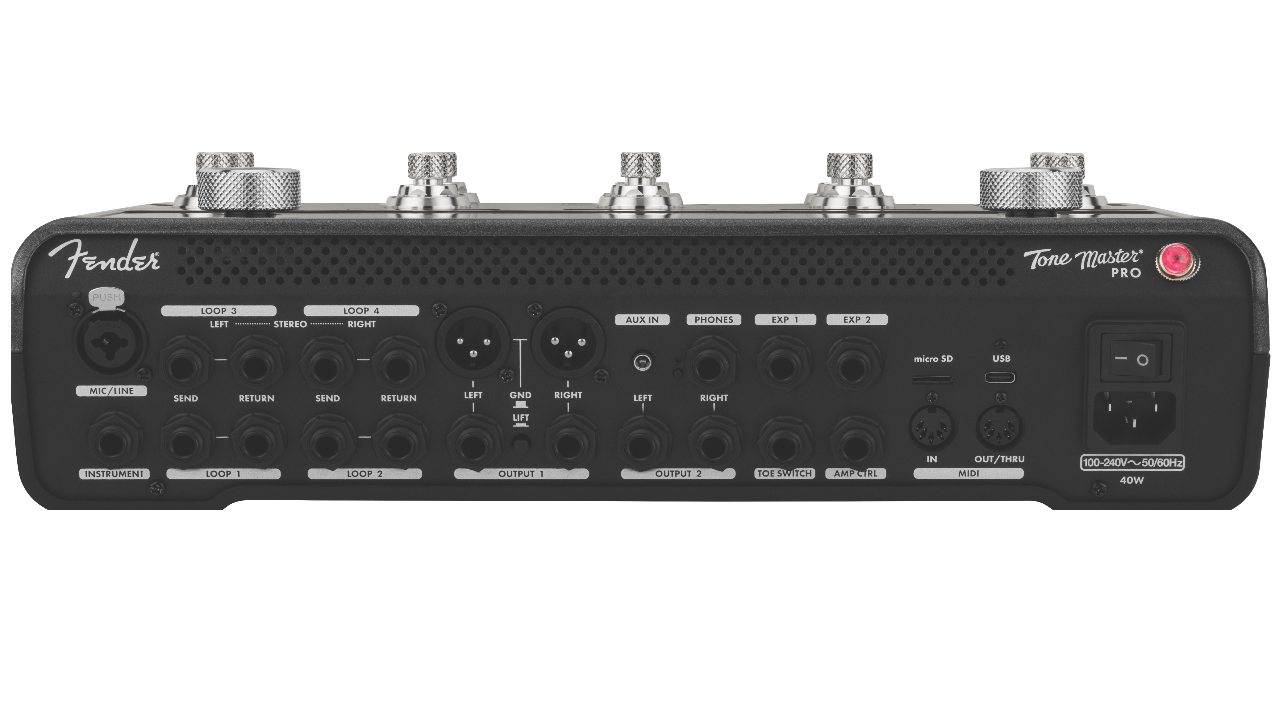
Effects options are relatively plentiful and span all the essential categories, while including a range of Fender specifics, veiled renditions of classics and generic studio units. Add the 26 cabs (with more available) and seven mics, and it covers a good range of essential sounds.
I tested the Tone Master Pro with a Telecaster, a Jazzmaster and a Les Paul, through a pair of Fender Tone Master FR-10 cabs as supplied (see sidebar) and with headphones. By any measure the amp, cab and effects models sounded fantastic. The emulations sound entirely realistic, dynamic and expressive, relative to the aural adjustment that your listening format of choice requires.
The sturdily built, co-branded Fender/Mission SP1-TMP functioned seamlessly, too, offering easy access to not only wah-wah and volume but also creative control over up to five modeler parameters at once. To my ears, the Fender models sound the most dialed-in of the bunch, and the editing capabilities made it easy to fine-tune and create presets and from-scratch rigs brewed to my preferences.
Ultimately, the Tone Master Pro offers an impressive amount of versatility — in sounds, functionality and connectivity — all at a level of quality that suits the professional stage as well as the weekend club, basement and rehearsal room. Most such releases land these days with an implied “more to come” caveat, and undoubtedly there is, but just as it sits, the Fender Tone Master Pro is easily worthy of an Editors’ Pick Award.
Specifications
- CONTROLS Rotary preset selector, master volume, 10 dual-function foot-switch/rotary controls, full color LCD touch-screen interface
- DSP Eight core processor, 32-bit digital audio, 44.1kHz internal sample rate (project sync 44.1/48/88.2/96kHz)
- I/O Inst input, mic/line input (dual XLR and ¼” TS/TRS), send and return for four FX loops, left and right output 1 (both XLR and ¼”), left and right output 2 (¼” only), aux In, headphones out, Exp 1 & 2, toe switch, amp control, USB-C, DIN MIDI In and Out/Thru, micro SD card slot, and IEC AC power connection
- SIZE 14.6” x 10.3” x 3.8” (WxDxH)
- WEIGHT 8.8 lbs
- BUILT China
See Fender for more information
Dave Hunter is a writer and consulting editor for Guitar Player magazine. His prolific output as author includes Fender 75 Years, The Guitar Amp Handbook, The British Amp Invasion, Ultimate Star Guitars, Guitar Effects Pedals, The Guitar Pickup Handbook, The Fender Telecaster and several other titles. Hunter is a former editor of The Guitar Magazine (UK), and a contributor to Vintage Guitar, Premier Guitar, The Connoisseur and other publications. A contributing essayist to the United States Library of Congress National Recording Preservation Board’s Permanent Archive, he lives in Kittery, ME, with his wife and their two children and fronts the bands A Different Engine and The Stereo Field.
Guitar Center's Guitar-A-Thon is back, and it includes a colossal $600 off a Gibson Les Paul, $180 off a Fender Strat, and a slew of new exclusive models
"We tried every guitar for weeks, and nothing would fit. And then, one day, we pulled this out." Mike Campbell on his "Red Dog" Telecaster, the guitar behind Tom Petty & the Heartbreakers' "Refugee" and the focus of two new Fender tribute models
